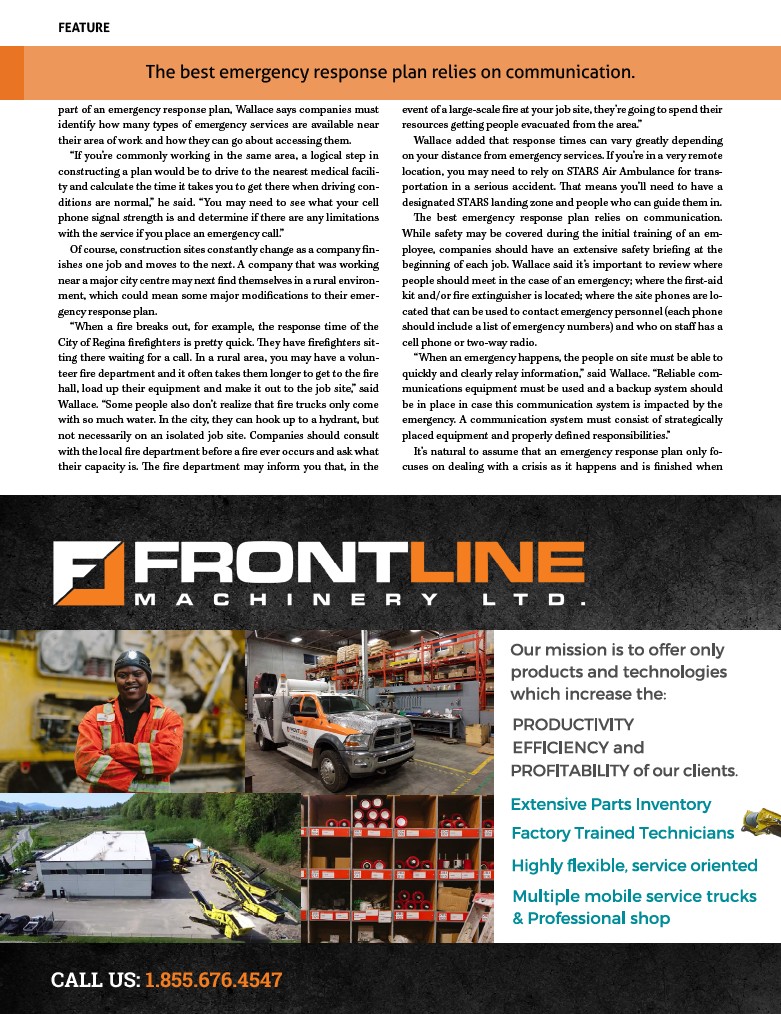
FEATURE
The best emergency response plan relies on communication.
part of an emergency response plan, Wallace says companies must
identify how many types of emergency services are available near
their area of work and how they can go about accessing them.
“If you’re commonly working in the same area, a logical step in
constructing a plan would be to drive to the nearest medical facili-ty
and calculate the time it takes you to get there when driving con-ditions
are normal,” he said. “You may need to see what your cell
phone signal strength is and determine if there are any limitations
with the service if you place an emergency call.”
Of course, construction sites constantly change as a company fin-ishes
one job and moves to the next. A company that was working
near a major city centre may next find themselves in a rural environ-ment,
which could mean some major modifications to their emer-gency
response plan.
“When a fire breaks out, for example, the response time of the
City of Regina firefighters is pretty quick. They have firefighters sit-ting
there waiting for a call. In a rural area, you may have a volun-teer
fire department and it often takes them longer to get to the fire
hall, load up their equipment and make it out to the job site,” said
Wallace. “Some people also don’t realize that fire trucks only come
with so much water. In the city, they can hook up to a hydrant, but
not necessarily on an isolated job site. Companies should consult
with the local fire department before a fire ever occurs and ask what
their capacity is. The fire department may inform you that, in the
event of a large-scale fire at your job site, they’re going to spend their
resources getting people evacuated from the area.”
Wallace added that response times can vary greatly depending
on your distance from emergency services. If you’re in a very remote
location, you may need to rely on STARS Air Ambulance for trans-portation
in a serious accident. That means you’ll need to have a
designated STARS landing zone and people who can guide them in.
The best emergency response plan relies on communication.
While safety may be covered during the initial training of an em-ployee,
companies should have an extensive safety briefing at the
beginning of each job. Wallace said it’s important to review where
people should meet in the case of an emergency; where the first-aid
kit and/or fire extinguisher is located; where the site phones are lo-cated
that can be used to contact emergency personnel (each phone
should include a list of emergency numbers) and who on staff has a
cell phone or two-way radio.
“When an emergency happens, the people on site must be able to
quickly and clearly relay information,” said Wallace. “Reliable com-munications
equipment must be used and a backup system should
be in place in case this communication system is impacted by the
emergency. A communication system must consist of strategically
placed equipment and properly defined responsibilities.”
It’s natural to assume that an emergency response plan only fo-cuses
on dealing with a crisis as it happens and is finished when
CALL US: 1.855.676.4547